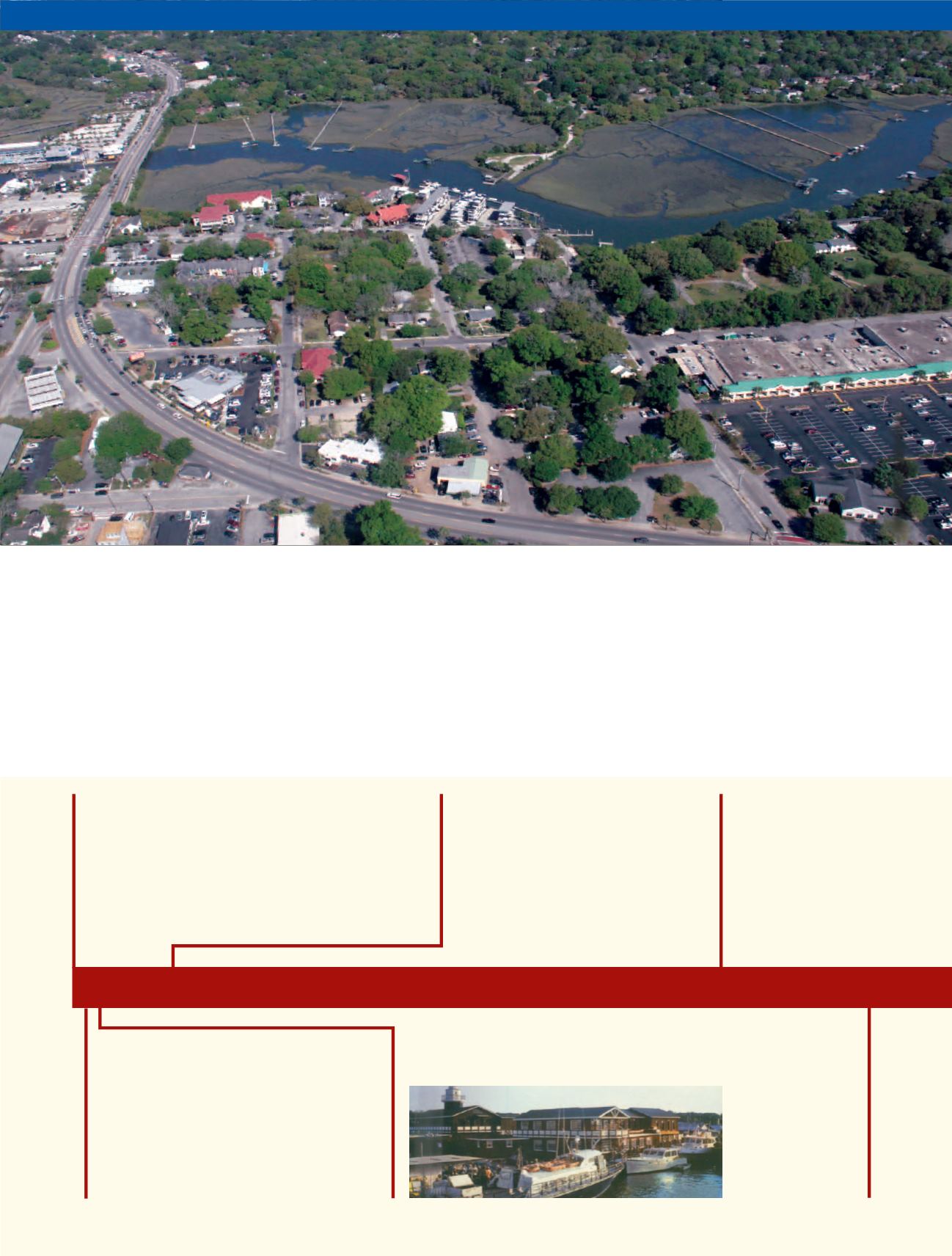

with implementing wide-ranging economic and business
development strategies.
Livingston said the town has taken a three-pronged
approach to economic development, focusing largely on
creating a quality of life and place that is “second to none”;
beefing up economic development incentive grants; and
offering robust business services, which include the town’s
marketing efforts.
The development grants have proven especially
popular, according to town officials. Incentives can include
reimbursements for impact, building permit and plan
review fees. In February, the Council unanimously voted
to expand the program by extending available business
license tax reimbursements, a tool that benefits companies
looking to locate in existing buildings.
And in July, rising tech firm Job Market Maker
relocated its offices to 410 Mill St., just off Coleman
Boulevard and along Shem Creek.
1958
A 2.4-mile section of Old Georgetown Road – also
known as Route 17 – that begins at the foot of the
Cooper River Bridge and ends at the fork where it
becomes Route 703 – Ben Sawyer Boulevard – is
renamed to honor Mayor Francis F. Coleman.
1959
A two-year project widens Coleman
Boulevard from a two-lane, 18-foot-wide
road to a four-lane roadway ranging in
width from 52 feet to 62 feet. The Shem
Creek Bridge is also widened from 26
feet to 56 feet.
1960s
The first restaurants open on Shem Creek.
1966
The Pearman Bridge across the
Cooper River opens, bringing
more people into Mount Pleasant.
Construction gets underway on the
bypass for Route 17 through former
farmland in Christ Church Parish.
1980s
Businesses shift away
from Coleman Boule-
vard to Johnnie Dodds
Boulevard, a frontage
road that parallels the
Route 17 bypass.
1989
Hurricane Hugo
destroys many
businesses
on Coleman
Boulevard.
Photo by Brandon Clark.
MPBM
www.MPBusinessMag.com|
www.MountPleasantMagazine.com | www.ReadMPM .comwww
.MPBusines Mag.com | ww w.MountPleasantM gazine.com | ww w.ReadMPM.com















